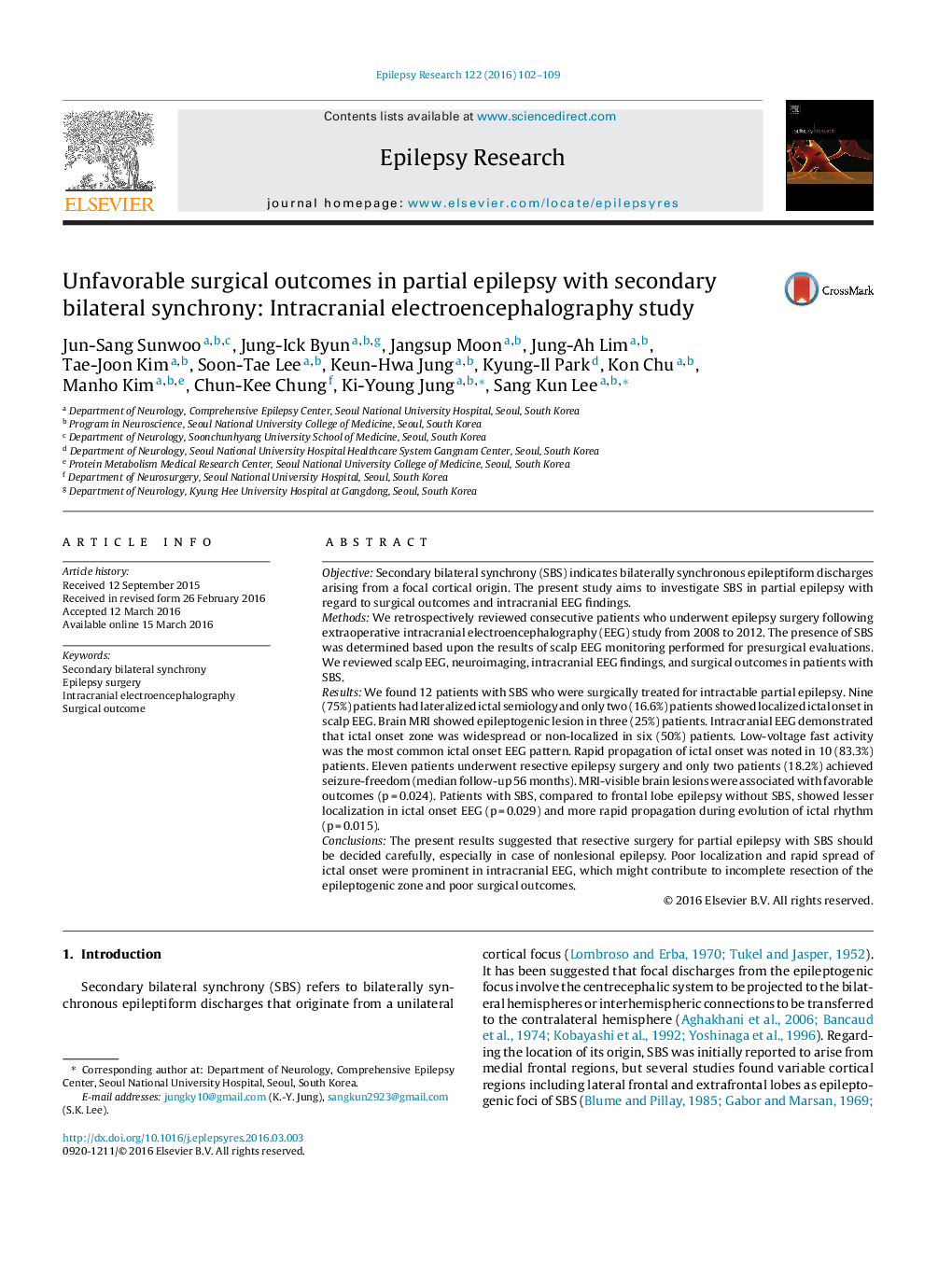| کد مقاله | کد نشریه | سال انتشار | مقاله انگلیسی | نسخه تمام متن |
|---|---|---|---|---|
| 3051960 | 1579901 | 2016 | 8 صفحه PDF | دانلود رایگان |
• Patients with SBS had unfavorable outcomes after resective epilepsy surgery with a seizure-free rate of 18.2%.
• Poor localization and rapid propagation of ictal discharges were intracranial EEG features of SBS.
• The presence of epileptogenic lesions in brain MRI was significantly associated with favorable surgical outcomes in partial epilepsy with SBS.
ObjectiveSecondary bilateral synchrony (SBS) indicates bilaterally synchronous epileptiform discharges arising from a focal cortical origin. The present study aims to investigate SBS in partial epilepsy with regard to surgical outcomes and intracranial EEG findings.MethodsWe retrospectively reviewed consecutive patients who underwent epilepsy surgery following extraoperative intracranial electroencephalography (EEG) study from 2008 to 2012. The presence of SBS was determined based upon the results of scalp EEG monitoring performed for presurgical evaluations. We reviewed scalp EEG, neuroimaging, intracranial EEG findings, and surgical outcomes in patients with SBS.ResultsWe found 12 patients with SBS who were surgically treated for intractable partial epilepsy. Nine (75%) patients had lateralized ictal semiology and only two (16.6%) patients showed localized ictal onset in scalp EEG. Brain MRI showed epileptogenic lesion in three (25%) patients. Intracranial EEG demonstrated that ictal onset zone was widespread or non-localized in six (50%) patients. Low-voltage fast activity was the most common ictal onset EEG pattern. Rapid propagation of ictal onset was noted in 10 (83.3%) patients. Eleven patients underwent resective epilepsy surgery and only two patients (18.2%) achieved seizure-freedom (median follow-up 56 months). MRI-visible brain lesions were associated with favorable outcomes (p = 0.024). Patients with SBS, compared to frontal lobe epilepsy without SBS, showed lesser localization in ictal onset EEG (p = 0.029) and more rapid propagation during evolution of ictal rhythm (p = 0.015).ConclusionsThe present results suggested that resective surgery for partial epilepsy with SBS should be decided carefully, especially in case of nonlesional epilepsy. Poor localization and rapid spread of ictal onset were prominent in intracranial EEG, which might contribute to incomplete resection of the epileptogenic zone and poor surgical outcomes.
Journal: Epilepsy Research - Volume 122, May 2016, Pages 102–109
